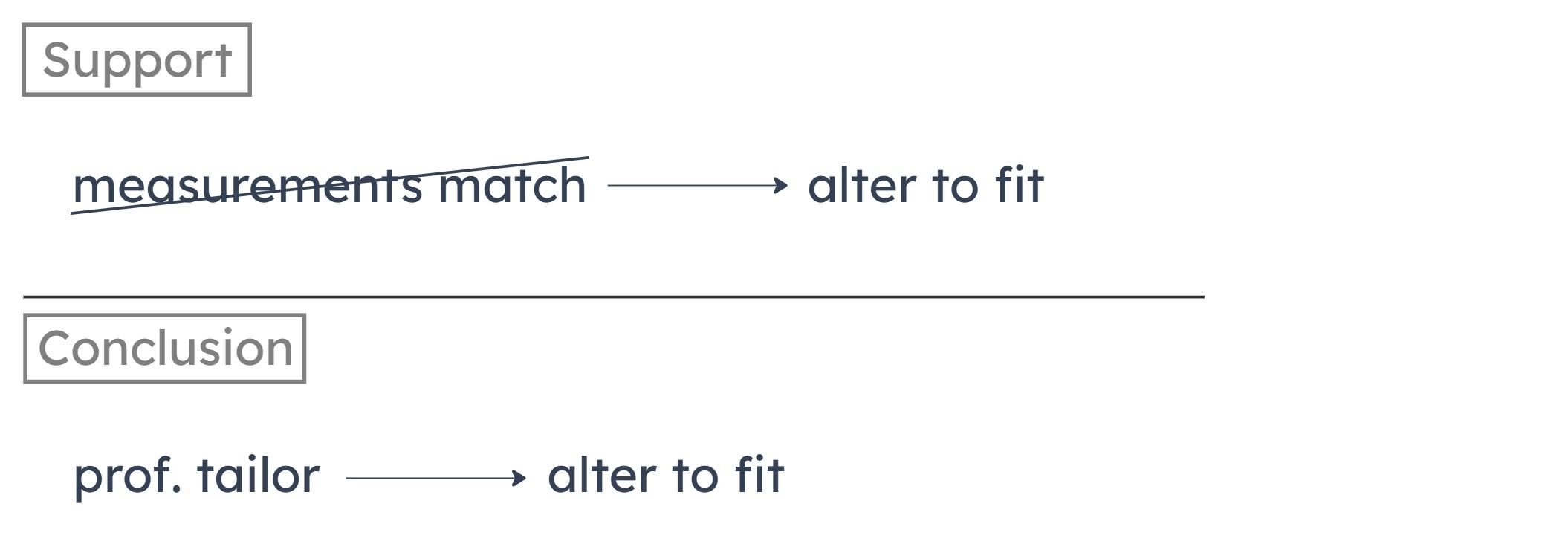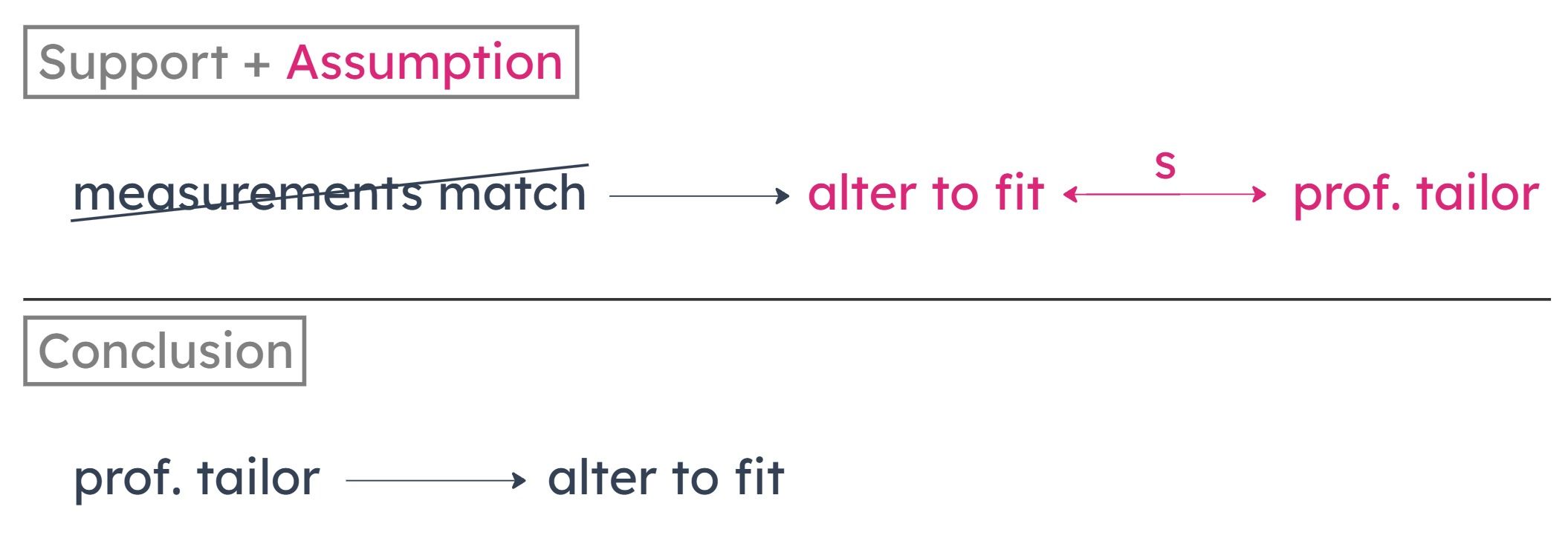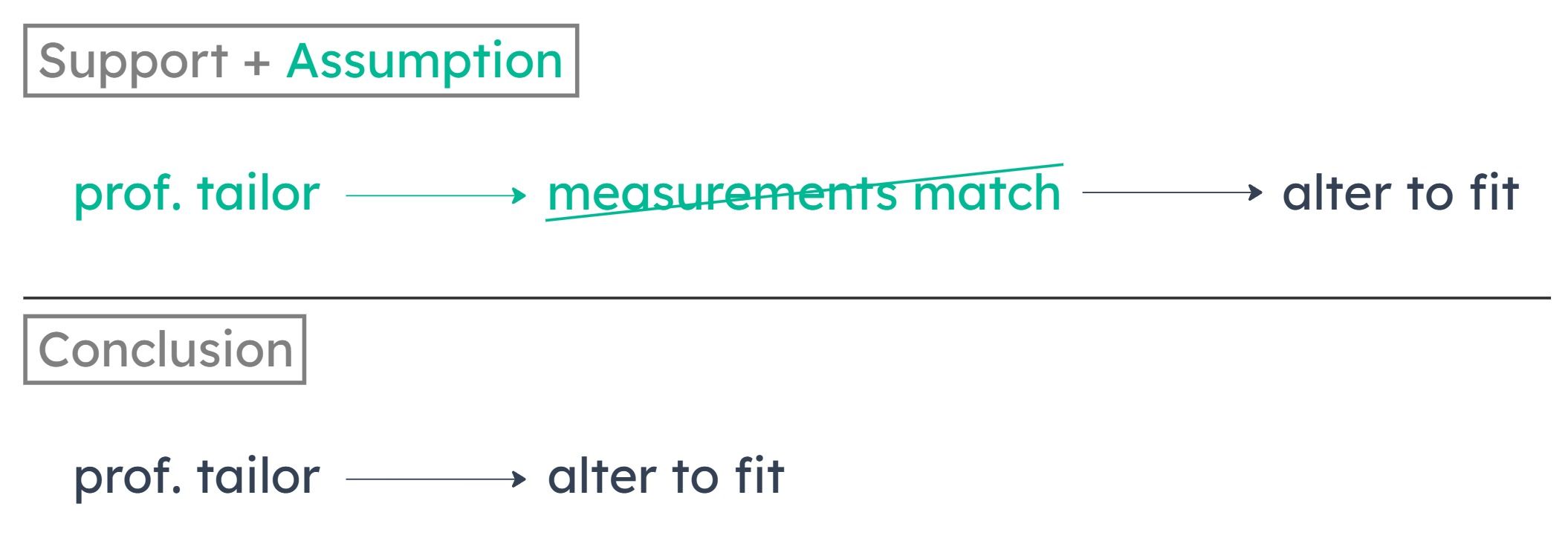Summary
The author concludes that a professional tailor always alters a pattern to fit the wearer. Why? Because any tailor always alters a pattern to fit the wearer, unless the wearer’s measurements already match the pattern to begin with.
Note that the first sentence provides no support for the conclusion.

Missing Connection
The conclusion is about professional tailors, but the premise refers only to tailors more broadly.
Also, the conclusion is that professional tailors always alter the pattern, no exceptions. But the premise allows for an exception: tailors in general alter the pattern unless the wearer’s measurements already match the pattern.
The premise would lead to the conclusion if we knew that for professional tailors specifically, the exception never applies. That is, for a professional tailor, the wearer’s measurements never match the pattern.
A
Most manufactured patterns do not already accommodate the future distortion of fabrics that shrink or stretch.
This says nothing about professional tailors and so can’t help us reach the conclusion. Also, fabric distortion is irrelevant. The argument is focused solely on how tailors change patterns to fit the wearer. Nothing in the stimulus suggests fabric distortion has any part in that.
B
At least some tailors who adjust patterns to the wearer and to the fabrics used are professional tailors.
Too weak. The fact that some professional tailors sometimes adjust the pattern to fit the wearer isn’t enough to reach the conclusion that all professional tailors always adjust the pattern. Also, note that any details about adjusting fabrics are irrelevant to the argument.

C
The best tailors are those most able to alter patterns to fit the wearer exactly.
This refers to the best tailors, but the conclusion is about professional tailors. Because (C) tells us nothing about professional tailors, it can’t help us reach the conclusion.
D
All professional tailors sew only for people whose measurements do not exactly match their chosen patterns.
We know from the argument’s premise that if a person’s measurements do not exactly match the chosen pattern, a tailor will always alter the pattern. (D) adds that professional tailors always sew for such people. So professional tailors always alter the pattern.

E
A professional tailor can always estimate exactly how much a fabric will shrink or stretch.
Fabric distortion is a red herring—it’s irrelevant to the argument. The argument is focused solely on how tailors change patterns to fit the wearer. Nothing in the stimulus suggests fabric distortion has any part in that.
Summary
A design that turns out well has usually gone through many drafts, with each improving on the last. Sketching an idea usually allows a designer to see an idea’s flaws and advantages. Areas where the sketch feels confused reveals where the design has been inadequately conceptualized.
Strongly Supported Conclusions
A design that turns out well has usually involved the designer sketching the design many times to see areas where the sketch has been inadequately conceptualized.
A
The designs that turn out best go through the most drafts.
This is unsupported because we don’t have enough information to state the superlative that the drafts that turn out best go through the most drafts. We only know that good designs in general typically have many drafts.
B
Many good designs have emerged from design ideas that were flawed.
This is strongly supported because if good designs are the products of drafting an idea many times, and drafts are useful because they help a designer see where a sketch is flawed, many of those good ideas had initial flaws that were improved on subsequent drafts.
C
Designs that do not turn out well have not gone through many drafts.
This is unsupported because many drafts is usually necessary for good designs, not sufficient as this answer choice sees it.
D
Designs whose initial conceptualization was inadequate rarely turn out well.
This is unsupported because the initial conceptualization may be able to be refined over a series of many drafts even if the initial conceptualization was inadequate.
E
A designer will never see advantages and flaws in a design idea without the aid of a sketch.
This is unsupported because while a sketch helps designers see flaws, it is too strong to say that sketches are a necessary condition of seeing flaws as answer choice E implies.